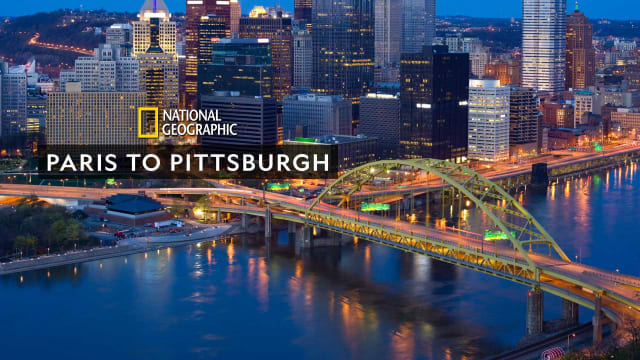 |
| A highlight from my summer trip to Seattle |
When I was a student forty or so years ago, the changes we're dealing with were already underway, but it was difficult to see at the time. One day my political science professor announced, "Well, the world gained an empire last night!" (The tiny Central African Republic had rebranded itself, temporarily as it turned out.) None of us students knew this, until our professor told us. A few years later, in my own classroom, I found a note on my desk relating to our class discussions about American covert involvement in Nicaragua: "Could you please explain who or what are the contras?"
Today, anyone curious about the contras, or the latest news from the Central African Republic, could become more knowledgeable than me with a quick Internet search:
The academic model of discrete bodies of knowledge, possessed and dispensed by experts, and memorized by students to some degree or other, measured quantitatively and then rated on an ABCDF scale, has been overtaken by technology... if indeed it was ever very useful. There's some comfort on both sides in continuing to play the game, though, particularly for those of us who are (or were) very good at memorizing and articulating. Everyone knows their role (expert/grader, good student, poor student), the numbers give us an appearance of objectivity, and real life keeps going outside the classroom.
Did I really think, all those years ago, that all I had to do was make through college, then flash my diploma and my GPA, and lifetime employment would be mine? Did I really think, once I began teaching, that my role as objective explainer would be easy to define? Did we really think, all those years ago, that cars would always cheaply get us anywhere we needed to go?
 |
| Source: Youtube |
 |
| Source: Pixabay via Journalists Resource |
James Morone, in The Devils We Know (Kansas University Press, 2014), the fine collection of his essays from which I'm teaching this semester, portrays American political culture as an ongoing negotiation among individuals, institutions, and traditions. That seems a good way to approach anything as complex as a political culture, or a town, or an individual life. No one person or group can contain the entirety of a complex truth--which makes the "sage on the stage" model of academia even more obviously absurd.
Even so, there must be ways to distinguish among the claims for our support, and make some judgments, however tentative, about their validity. Empirical evidence will get you some ways down the road, but I'm finding myself increasingly drawn to moral arguments. Is it some life-cycle thing with me personally, or has some social consensus broken down that requires sides be taken?


One can't teach a seminar like mine on A Sense of Place without taking note of the impact of intracity highway construction on American life: the growth of the suburbs, the marginalization of the "inner city" and its nonwhite inhabitants, the types of businesses (mainly franchises) that were viable, the ways of getting around (any way but cars) that were not viable, the stress on government budgets once the maintenance bills started coming due. I grew up at a time when all this was taken for granted; it was "the way things are." If I thought about it at all, I assumed this is how supply, demand and available technology were naturally working things out. Of course suburban sprawl stemmed from policy decisions. And a lot of those policy decisions were motivated by racial segregation, highways drawn through black neighborhoods and to maintain "the boundary between the white and Negro communities," in the words of former Atlanta mayor Bill Hartsfield (Kruse 2019). Policies that work to the advantage of whites at the expense of nonwhites are not good, right?
To shape the future, the very future that my students will inhabit far longer than I will, we need to come to grips with what ails the present. And that means finding some other way to respond than racism, greed or fear, while praising responses like that of Ottumwa Main Street that are both imaginative and incremental.
Downtown farmers' market, Butte MT:
Objectively preferable to a strip mall on a high-speed stroad?
|
- A Silent But Needful Protest, 1 November 2016 [Coe College responds to the defacing of Multicultural Fusion posters]
- Crime and Our Common Life, 1 August 2016 [The mysterious rise and fall and possibly now rise of violent crime rates in America]
- Snout Houses? In Oakhill-Jackson??, 16 October 2016 [Suburban style development in a historic Cedar Rapids neighborhood]
- Let's Hear It for Cedar Rapids, 5 September 2016 [The Mayors Bike Ride and everything else going on Labor Day weekend]
- Gentrification: What Do We Know? 26 July 2016 [literature review analyzing a complex and controversial phenomenon]
- Where are the Suburbs? 24 June 2019 [three definitions of the urban-suburban divide, applied to Cedar Rapids... a tangle of a post crying out for some graphic accompaniments]
- Halloween 2013, 1 November 2013 [Halloween as civic holiday]
- Downtown Construction Continues, 23 September 2014 [early stages of the CRST building]
- Nothing Says Community Like..., 13 January 2014 [Take your Christmas tree to this parking lot and it will be made into trails]
- Book Review: Cities for People, 18 July 2018 [Danish planner Jan Gehl looks at city design from the perspective of human nature]





















:no_upscale()/cdn.vox-cdn.com/uploads/chorus_asset/file/18366510/GettyImages_2931529.jpg)





